Śravaṇa-Gateway to the Eternal

Courtesy of StarryEarth, CC By-NC 2.0 via Flickr. CC by NC 2.0
शृ॒ण्वन्ति॑ श्रो॒णाम॒मृत॑स्य गो॒पाम्। पुण्या॑मस्या॒ उप॑शृणोमि॒ वाचम्̍।
म॒हीं दे॒वीं विष्णु॑पत्नीमजू॒र्याम्। प्र॒तीची॑मेनां ह॒विषा॑ यजामः।
त्रे॒धा विष्णु॑रुरुगा॒यो विच॑क्रमे। म॒हीं दिवं॑ पृथि॒वीम॒न्तरि॑क्षम्।
तच्छ्रो॒णैति॒ श्रव॑ इ॒च्छमा॑ना। पुण्यं श्लोकं॒ यज॑मानाय कृण्व॒ती ॥ २२ ॥
śṛṇvanti śroṇām amṛtasya gopām |
puṇyām asyā upaśṛṇomi vācam |
mahīṃ devīṃ viṣṇupatnīm ajūryām |
pratīcīm enāṃ haviṣā yajāmaḥ |
tredhā viṣṇur urugāyo vicakrame |
mahīṃ divaṃ pṛthivīm antarikṣam |
tac chroṇaiti śrava icchamānā |
puṇyaṃ ślokaṃ yajamānāya kṛṇvatī || 22 ||
“[They] listen to the Śroṇā, the protector of Amrita.
Her sacred speech I strain to hear,
The Goddess Great, Ever-young Wife of Viṣṇu,
We sacrifice to Her with our offering, the Lady of the Western direction.
Thrice Viṣṇu strode with [his] wide strides [over] the Great Heaven and Earth and Space [between them];
There goes Śroṇā, seeking [her] Glory, Creating sacred verse for Yajamāna.”
Śravaṇa—The Star of Hearing and Learning
"Seeing is believing," it is said. Yet, even though we can’t tangibly perceive consciousness, wisdom, love, and the very air we breathe, we know they exist. And is it not true that our limited senses often deceive us? Therefore, can we truly understand anything?
Although our own practical experience affirms the limitations of our five senses, the spiritual traditions of India agree the best way to receive sublime wisdom is through the medium of hearing. In Sanskrit, the foundational process of hearing is called śravaṇam, which is derived from the verbal root (dhātu) śru, meaning “to hear, listen, or be attentive.”
Śravaṇa and The Eagle
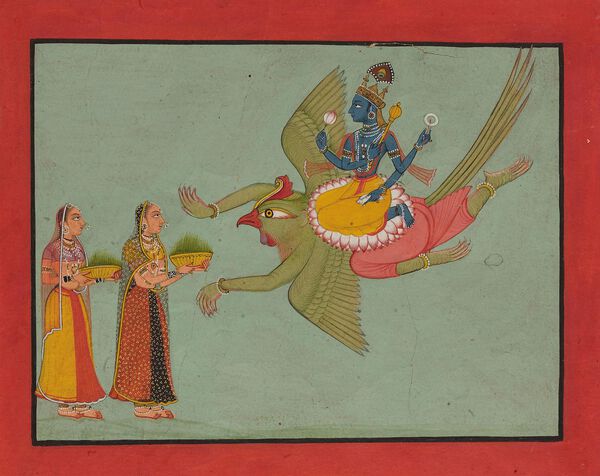
So important is the principle of śravaṇam, that it finds footing in the firmament of stars. The corresponding nakṣatra that embodies śravaṇam is aptly named Śravaṇa. Unsurprisingly, one symbol (pratimā) of this nakṣatra is an ear.
Situated from 10°00’ Capricorn to 23°20’ Capricorn, Śravaṇa’s yoga tārā (marker star) is Altair (Alpha Aquilae), a brilliant star that is part of the Summer Triangle. This asterism lies in the constellation known as Aquila, a Latin word meaning “eagle.” How fitting that the deity of Śravaṇa, Lord Viṣṇu is often depicted soaring the sky on his carrier, Garuḍa, a divine and giant eagle!
And just like an eagle high in the sky, Altair, is perched high above the conventional zodiacal constellations at 7°55’ Capricorn and 29°18' north of the ecliptic. This effulgent star is the highest, northernmost, and brightest of the 27 nakṣatra yoga tārā (along with Aldebaran of Rohiṇī) with a whopping magnitude of 0.75. In addition, this dazzling luminary points us to Vaikuṇṭha, the eternal abode of Lord Viṣṇu.

Sri Viṣṇu—The All-Pervading Preserver
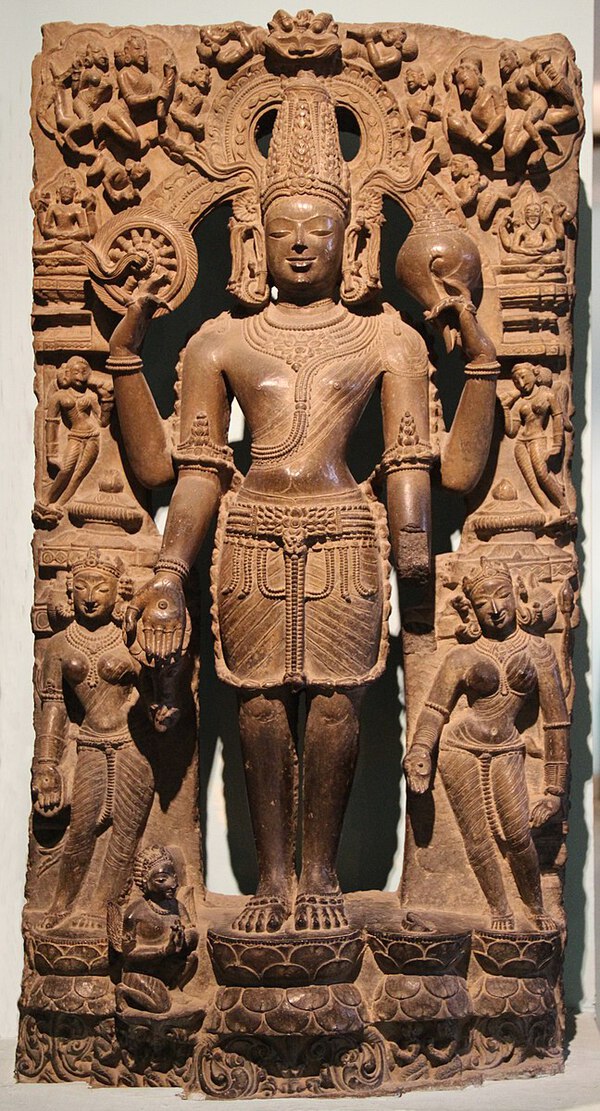
viṣṇor nu kaṁ vīryāṇi pravocaṁ
yaḥ pārthivāni vimame rajāṁsi
Only he may fully enunciate the heroic deeds of Lord Viṣṇu who can count all the particles of dust in the world. (Ṛg Veda 1.154.1)
At the heart of the rich wisdom, art, and devotion of India is sampradāya —unbroken oral and aural tradition preserved through lineage generation after generation. To this day, there are many such ancient sampradāyas related to Jyotiṣa, the arts, medicine, yoga, philosophy, and devotion that are very much alive and kicking.

Naturally, the arduous task of preserving these currents of divinity is considered the most important service and the highest privilege of one in a sampradāya. It is said that more difficult than creating or destroying is the act of maintaining, a responsibility accomplished via the agency of Lord Viṣṇu, who preserves and pervades the entire universe, all while bestowing light, goodness, and proper perception.
Sampradāya naturally necessitates teaching and śravaṇam, the process of hearing. In contrast to the sound produced by material objects or the sound of our vocal cords, the sound of the Vedas is anāhata, or the sound of the celestial realm. This is the sound referred to as śruti, or “that which is heard” and also specifically refers to the verses of the Vedas revealed to and preserved by the ṛṣis.
The first recipient of Śruti, was the four-headed architect of the Universe, Lord Brahmā, who was born from a lotus flower emanating from the navel of Viṣṇu. By the grace of Lord Viṣṇu, he heard the sound “tapa” (austerity) and began to perform severe penances. Only when Brahmā’s austerity matured did he realize the Veda through the grace of Lord Viṣṇu, who dwells as the Paramātmā, or Supreme Soul, within the heart of every entity (Śrīmad-Bhāgavatam 1.1.1). Thus, Viṣṇu began the aural and oral tradition as Lord Brahmā transmitted this same sound to Nārada, Nārada to Vyāsa, and so on.
The Three Worlds in Three Steps
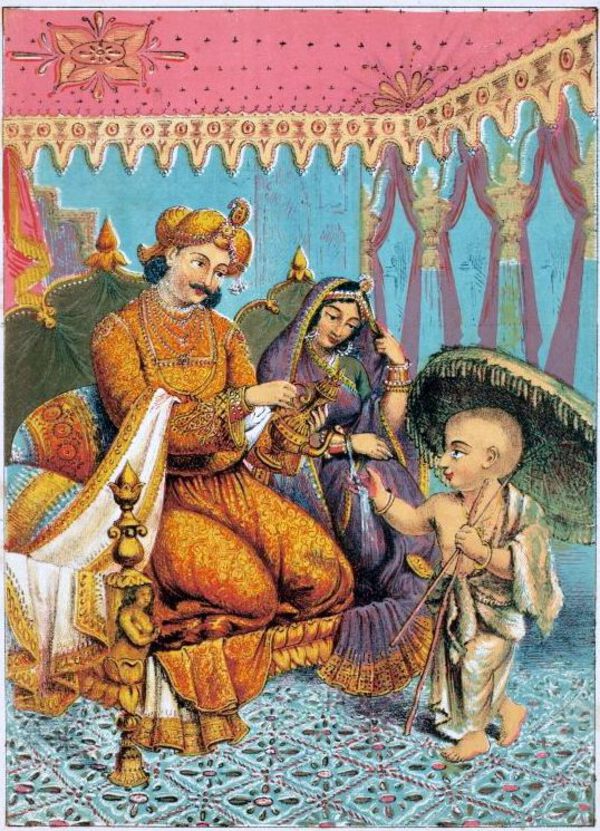
Lord Viṣṇu helped Indra regain control of the heavens by assuming the form of a small and mesmerizing young brāhmaṇa dwarf, Vāmana-avatāra who cheated the King of the Asuras, Bali. Capitalizing on his youth and charisma, he approached the king and requested a meager three steps of land. Renowned for his generosity and word, Bali was amused by the request. Disregarding his Guru Śukrācārya, who had informed him that the young boy was none other than their enemy, Lord Viṣṇu, the king compelled by his sense of dharma nevertheless fulfilled the dwarf’s wish. Immediately, assuming a gigantic cosmic form, Vāmana used his first step to reclaim the earthly and lower planetary systems and with his second step, he reclaimed the heavenly realms. Having already subdued the entire universe with just two steps, Lord Vāmana asked Bali where to put his third step. With full realization of Viṣṇu’s supreme godhood and with a mood of complete self-surrender, the great king offered his own head for the final step. Thus, it is quite logical that three footsteps are the second symbol for Śravaṇa.
Interpreting Śravaṇa in the Chart
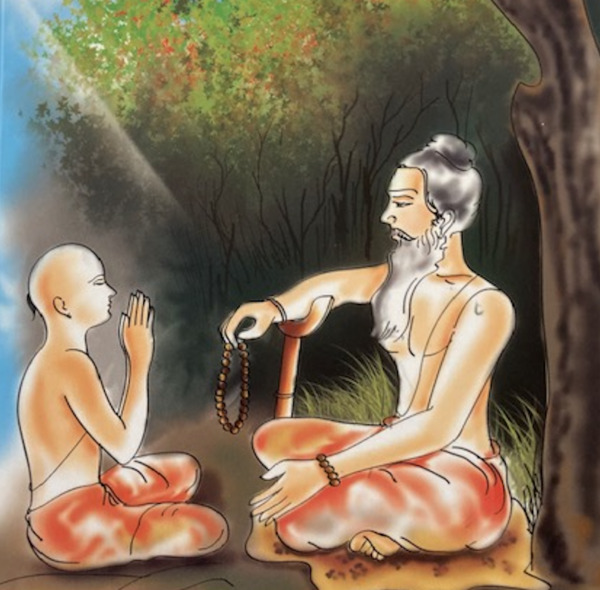
Interpretively, significant astrological placements in Śravaṇa can very literally indicate a profound spiritual disposition and a palpable passion for oral traditions, learning, and teaching. Those who intently hear from realized souls themselves go on to become powerful forces of truth, beacons of light, and harbingers of sacred beatitude. Thus, Śravaṇa natives may be dedicated learners, effective teachers, and gifted communicators who possess a finely cultivated intellect. In addition, they often have a deep sense of duty to preserve such traditions.
On a more worldly level, these themes can manifest as interest in journalism, authorship, reporting, broadcasting, social media, blogging, singing, storytelling, or even gossip, depending on the context of the chart. One way to distinguish traditional Śravaṇa meanings versus a more worldly Śravaṇa would be to look at dharma combinations and yogas related to spirituality.
Surprisingly, if the ninth, tenth, eleventh and twelfth lords or bhāvas, each indicating different parts of the lower body, are afflicted and configured with Śravaṇa, the native may have issues related to gait and may even have a limp. This is likely because the alternate name of Śravaṇa is Śrona, the lame one.
Just as Lord Vāmana’s expertly measured paces claimed the three realms, Śravaṇa natives may choose their steps carefully, have highly developed spatial intelligence, awareness of movement, and an uncanny understanding of where paths lead. Thus, yoga practitioners, choreographers, stage blockers, dancers, and even dance critics are all under the auspices of Śravaṇa.
The Wisdom Star and Maharishi Mahesh Yogi
Maharishi Mahesh Yogi January 12, 1917 Jaipur, India.[1]
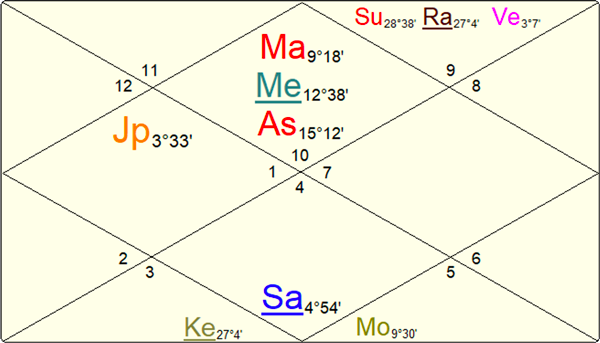
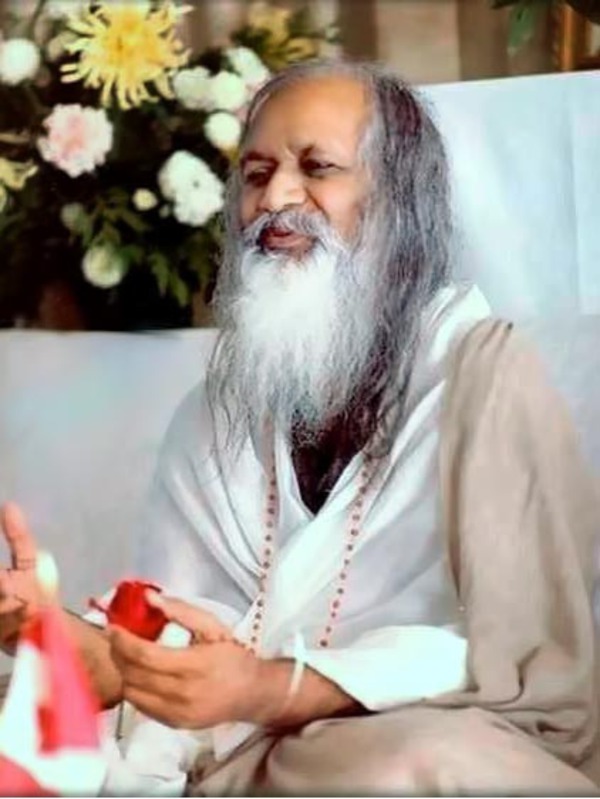
Maharishi Mahesh Yogi, the Indian saint who made meditation and mantra household words, is a shining example of the qualities of Śravaṇa nakṣatra. Not only did he embody so many of Śravaṇa’s meanings, he embodied many of its highest potentialities.
There are a number of reasons, astronomically speaking, why this nakṣatra plays such a dominant role in his chart. Both his Ascendant point and his very strong Mercury, who is the owner of the ninth bhāva of spirituality and wisdom, are in Śravaṇa. Mars is also in the first bhāva, and though technically in the unstoppable Uttarāṣāḍhā, it is on Śravaṇa’s yoga tārā, the brightest star in the zodiac and whose intense light brings Mars into Śravaṇa’s fold. The three-fold influence of this brilliant star indelibly marks this native.
Another fascinating thing about both Mars and Śravaṇa’s yoga tārā is that they also happen to be positioned in the “avyakta” (unmanifest) nakṣatra of Abhijit, the star of Vega with meanings such as “The Victorious” and “The One Who Cannot Be Defeated.”[2] Having Mars, the planet of command and action, in this zone of the zodiac speaks to Maharishi’s ability to marshal the resources that changed the direction of time toward a greater spiritual destiny.
The All-Pervading Viṣṇu
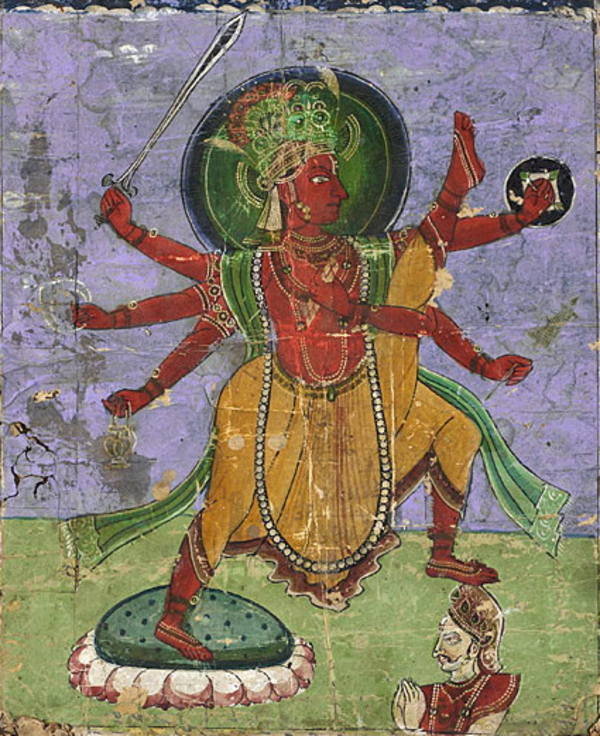
As we have seen, so much of a nakṣatra’s meanings and how they play out in the native’s chart have to do with the characteristics of the ruling devata, which in this case, is Viṣṇu. The foremost aspect of Viṣṇu is that his essence permeates everything in existence. He is infinite, unbounded, and beyond time and space.
This was exemplified in the aforementioned story of his Vāmana-avatāra, the dwarf, where he grew instantly to cosmic proportions and pervaded the three worlds with three steps. People with this nakṣatra prominent in their charts tend to seek and communicate knowledge that is universal, all-pervading, and transcendent in nature, and this certainly characterizes Maharishi’s life and mission. The meditation technique he brought to the world, Transcendental Meditation (TM), was designed to take one beyond the relative mind to the experience of the Transcendent Self, Universal Consciousness.
Another quality of Viṣṇu is that he is the guardian of cosmic law, and therefore, the upholder of dharma and the protector of the worlds. Śravaṇa people are very devoted and have a profound interest in the higher meaning of life. They are interested in truth and the structures that uphold universal laws, and in certain charts, have an ability to restore order and balance to life. Maharishi’s intent for coming to the West was to help reestablish dharma, which is living one’s life in greater attunement with the Divine Plan, with the governing principles of Nature. The result of being in greater alignment with Universal Consciousness is that we suffer less and experience the “flow” of life. Maharishi dedicated his life, working 22 hours a day, year after year, to make this a reality.
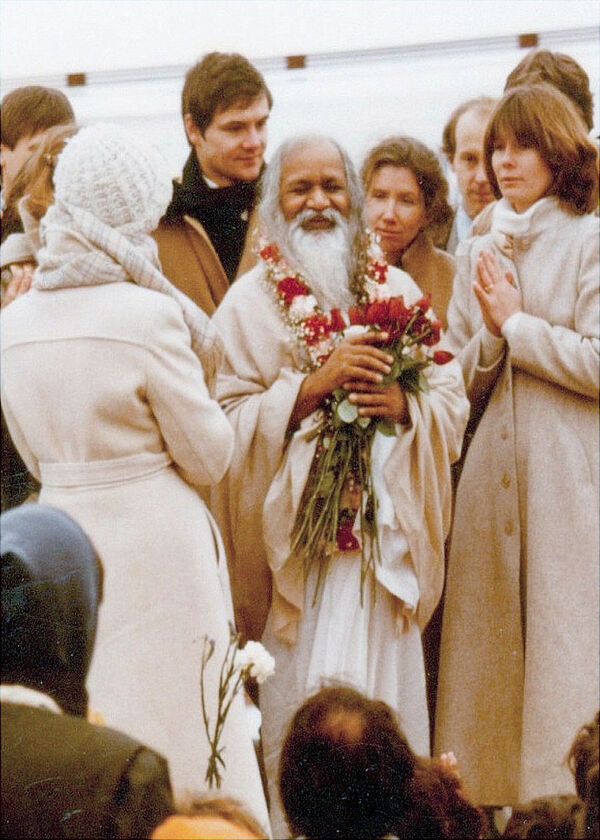
An outstanding chart feature that would support both his incredible capacity to sustain his grueling schedule over a long life and his devotion to dharma is seen in the strength of his Ascendant lord, Saturn. Saturn, no stranger to hard work and service, has two sources of strength, being retrograde and dig bala (directional strength; here in the seventh bhāva). Saturn aspects back to its own Ascendant, giving him an excellent ability to navigate through life and utilize what came his way. And navigate he did! All but one of the grahas are in cara (moveable) rāśis or dvisvabhāva (mutable) rāśis. He traveled incessantly until the last years of his life. However, the travel was always for the purpose of spreading the core message, originally under the name of The Spiritual Regeneration Movement.
His devotion to ultimate knowledge keyed by the prominence of Śravaṇa nakṣatra is underscored by the powerful sambandha (relationship) between dharma lord, Saturn, (his first lord) and dharma lord, Mercury, (ninth lord) in Śravaṇa, who also is doubly strong by dig bala and retrogression. Along with the inclination toward truth and purpose, dharma lords are excellent at strategy and planning. This was a hallmark of the TM movement, with Maharishi hands-on at all times. The two dharma lords externalized these themes, egged on by the powerful, exalted, can-do Mars. Mars and Saturn in a tight relationship between self (first bhāva) and all others (seventh bhāva) can be a tireless crusader who will work incessantly, in this case, waving the flag of dharma.
Communications
Śravaṇa natives with supporting karmic patterns are not only sagacious and profound in their own capacity for self-observation, but they have the capacity to reach others through their ability to communicate subtle knowledge in ways that connect their listeners to the wellspring of inner truth.
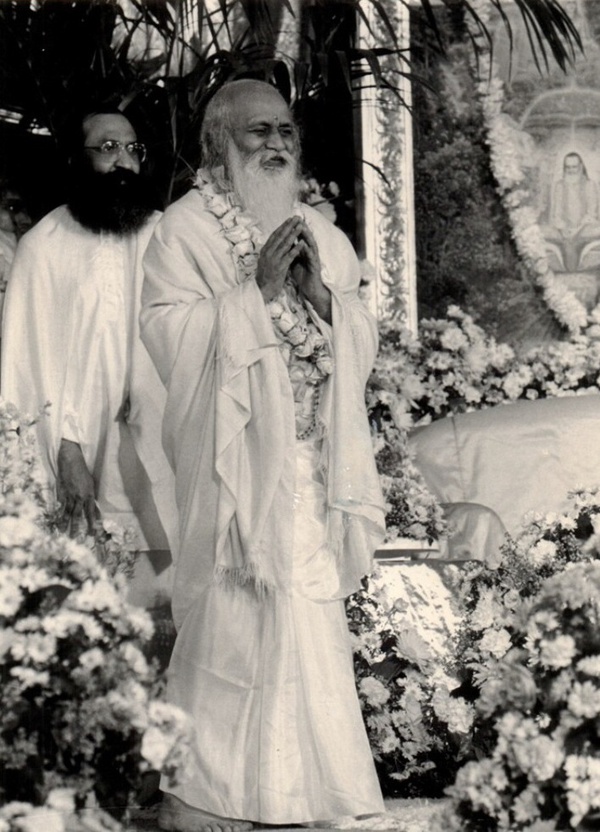
Maharishi’s life was about communication. He first came to the West in 1961 and spent his every waking hour for the next 20 years expounding on the benefits of meditation and encouraging the scientific research that ultimately proved those benefits. He then turned his attention to making detailed commentaries on the vast field of Vedic Science. Veda is the Sanskrit term for knowledge, but it specifically references the deeper knowledge of the governing principles that structure and maintain creation.
As indicated above, both the derivation of the word Śravaṇa from śrū, meaning “to hear,” and the pratimā (symbol), the ear ,indicate that these natives have the ability to be both good listeners and good speakers. This also implies the give and take that comes with dialogue. In the early ‘70s, while Maharishi had his headquarters in Switzerland, he was in constant conversation with some of the world’s greatest physicists, who were stationed at the nuclear accelerator at CERN. The topic of these many discussions was the remarkable similarities that exist between the description of reality held by the ancient Vedic rṣis and that offered by modern quantum physicists. These discussions represented one of the first significant bridges between modern science and spirituality and would soon develop into one of the most consequential expressions of Śravaṇa—the development of educational institutions that preserve the knowledge of previous generations and expand upon and make it relevant to the current time.

Maharishi masterfully demonstrated Śravaṇa’s ability to communicate through video to convey his knowledge. He pioneered the use of that medium for his teachings and accumulated tens of thousands of hours of both audio and video recordings devoted to the transmission of Vedic wisdom.
The second bhāva is the voice, and note again, it is the powerful Saturn who owns that bhāva, as well. The same trio of powerful grahas—Saturn, Mars, and Mercury—fueled his unbelievable capacity to speak for literally hours, well into the night, night after night, outlasting his often younger disciples. He had so mastered English that he was able to nuance and get across the most delicate distinctions and subtleties needed to point the way to that which ultimately could not be described. Upon finishing his lectures, he was off to work with small groups on publishing, acquisition of property, publicity, research, all the while being taped, so nothing would be lost. He could spend hours perfecting one sentence to be sure it would convey exactly the right nuance or subtlety.
His interest in higher education and research is keyed by the same beautiful sambandha between Mercury and Saturn right in the first bhāva. That it would go in the direction of research on the effects of meditation, expansion of consciousness, etc., is shown by the significant enlivenment of his mokṣa bhāvas (fourth, eighth and twelfth bhāvas). The daśās of those lords ran at key points in his life.
Preservation of Traditions
The ultimate and highest expression of Śravaṇa nakṣatra is the power to connect others with their divinity and preserve the teaching tradition that held that knowledge through the ages. Thus, we often see Śravaṇa natives involved in wisdom traditions and their preservation, as teachers of spirituality and religion.
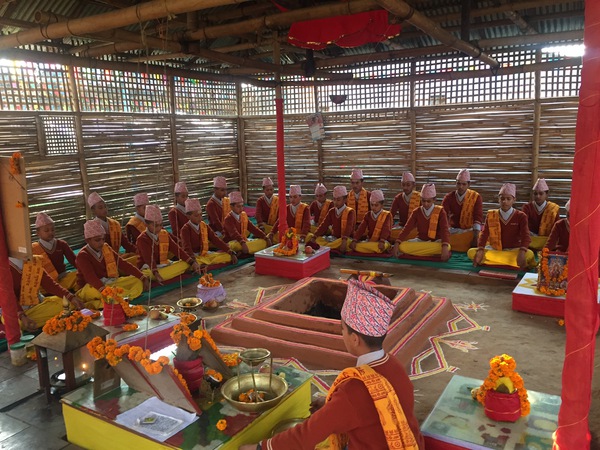
This was always the ultimate goal for Maharishi. He was intent on preserving as many aspects of Vedic knowledge as possible. He saw the Vedic traditions in India starting to wane under the pressure of the Western materialistic influence, so he created schools all over India for training young boys in the ancient ways. His intent was two-fold. He wanted to ensure the continuance of the ancient Sanskrit language in its purity, and he wanted to maintain the tradition of the oral recitation of the Vedic literature that had kept the Vedas vitally alive in the Indian culture for thousands of years.
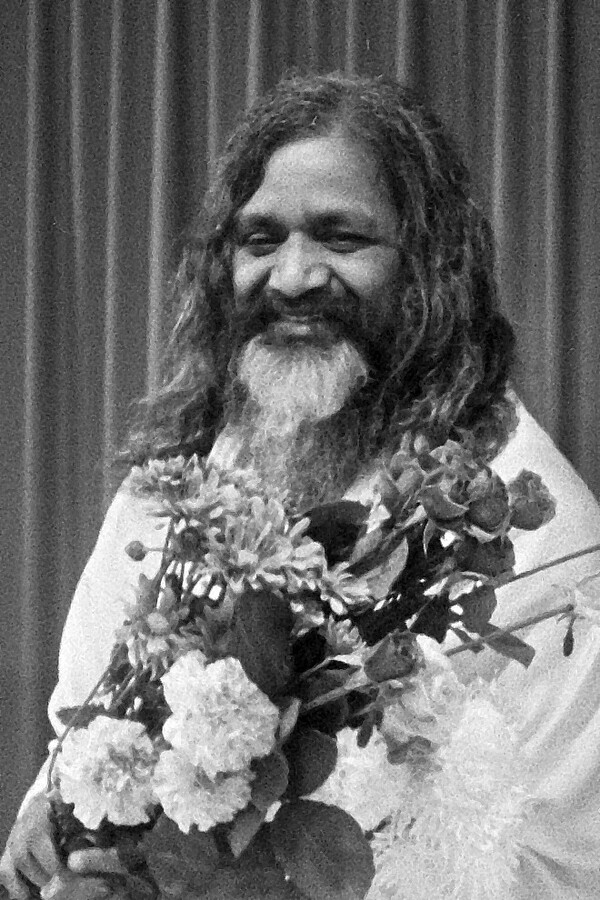
But his true genius lay in another way he attempted to preserve the Vedic traditions. As was mentioned, he could see that India was becoming more and more enamored with the material accomplishments of the West and that its people were losing interest in their own ancient traditions. So, he introduced Meditation, Yoga, Ayurveda, Jyotiṣa, and Vāstu, and let the light of science shine on them. Once these systems gained credibility and acceptance in the West, he mirrored this back to the people of India, giving them pride and renewed enthusiasm for their cultural heritage.
He carried out this plan starting with his first world tour in 1959, culminating in his first teacher training course in India with 60 participants from all over the world. They learned how to teach meditation and were introduced to the essence of Vedic teaching, the Bhagavad Gītā. It took off from there to a world-wide movement, with activities on every continent.
Most of the development of the movement was in Maharishi’s Rāhu daśā. Rāhu is in the twelfth bhāva of immigration, foreign travel, prolonged contact with foreigners, and being an outsider. The twelfth bhāva signifies not only travel, but also the theme of mokṣa, which, with confluence in a chart, represents a drive to that ultimate liberation. Jupiter, Mars, and Sun (lords of the fourth, eighth and twelfth bhāvas) are the three mokṣa lords and they are all activating mokṣa bhāvas by occupation or aspect. Note that Rāhu acts like Jupiter and Sun. During the 18 years of Rāhu daśā and the 16 years of Jupiter (1962-1996), the themes of the twelfth dovetailed perfectly—educational institutions in foreign lands dedicated ultimately to the pursuit of mokṣa, organized by a man outside of most of the cultures he was working with. And it was carried out on a scale beyond anyone’s expectations—except perhaps his.
Books and Buildings

Maharishi discerned that to truly preserve this knowledge, he needed to establish enduring educational institutions and curricula that would integrate practical subjects and the knowledge of the subtle laws of nature. He gathered disciples who were highly educated and developed The Science of Creative Intelligence, an innovative framework for teaching core principles of Vedic knowledge, and showed how they reflected in all disciplines. This fructified very quickly into the founding of Maharishi International University, first in California, in an apartment complex, and within a few years, into a full-blown University in Fairfield, Iowa.
Indeed, MIU, Maharishi International University, established in 1973, is the most stellar example of Maharishi’s unique blend of normal academic subjects with Vedic knowledge. It was accredited at the BA level in record time in 1974 and at the PhD level in 1980.

It is a truly international university, as students come from all over the world to study in this unique setting. The academic success of Maharishi International University and the other educational institutions he established around the world, give proof to his assertion that our ability to truly know anything is based on how expanded our “container” of knowledge is. To that end, students spend significant time in group meditation practices twice a day in large domed meditation halls and regularly attend talks and retreats to keep them connected to the path of establishing the ultimate freedom of completeness within themselves.
Established in Being—The Ultimate Answer
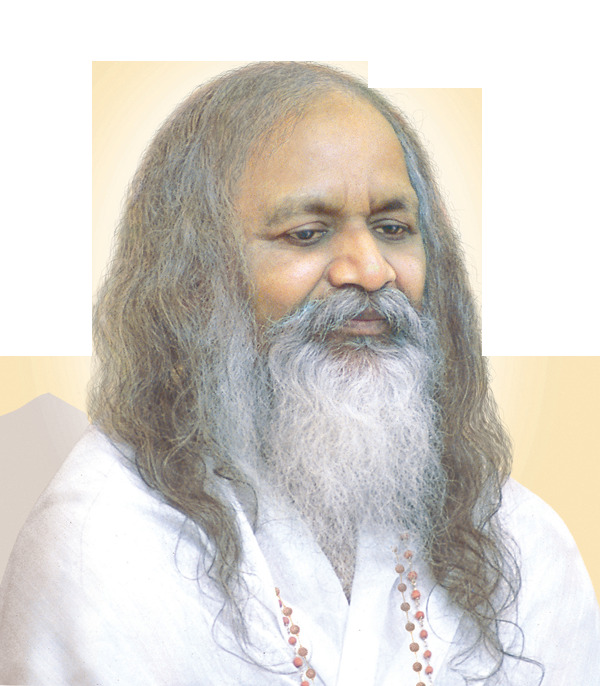
In the flurry of activity, achievement, and adaptation, Maharishi never lost the vision of the supreme goal of all Vedic wisdom, the evolution of human consciousness from our limited and often painful identification with the states of waking, dreaming, and deep sleep, to the experience of awakening to our own unbounded awareness. True to the highest expression of Śravaṇa, Maharishi offered the world an inspiring picture of our true potential.
There are seemingly endless variations in how the themes of the nakṣatras play out in the lives of people bathed in their light. Śravaṇa has such profound and erudite themes that it might be easy to overlook some of the other ways it powerfully influences natives born with this nakṣatra prominent.
Here is a vignette of but one example of a brilliant manifestation of the core Śravaṇa themes of aural and oral.
A Stratospheric Voice
Adam Lambert, January 29, 1982, 22:45 Indianapolis, Indiana USA[3]
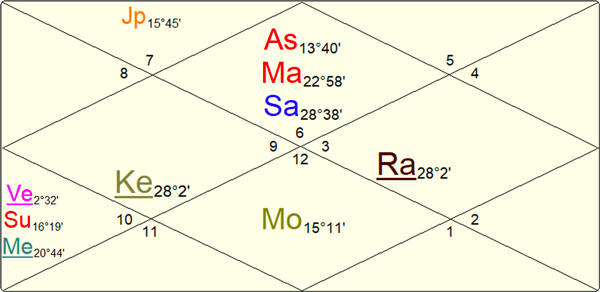
An Ideal Sound Machine

Adam Lambert is a singer-songwriter who rose to fame following his blowout performances on American Idol, Season Eight. Though he was not the winner (a hugely controversial outcome), he went on to be what Simon Cowell had hoped Idol would produce—a worldwide superstar. Indeed, along with a hugely successful solo career, Adam has done the impossible. In 2011, he stepped into the giant shoes of Freddie Mercury as the front man for the iconic band, Queen.
He is described by his parents as having extraordinary lung power right from birth, practicing his breath control at the expense of their sleep from day one. Others swear he has three lungs, a tribute to that extraordinary control which allows him to sing phrases with both power and velvet. Indeed, his physiology is uniquely suited for sound production. He has a large chest to support his sound and a large head giving the sound the ability to resonate through his facial cavities, giving a huge range of color to his tone.

Those in the know have commented on the unique gift of this voice. Brian May, the legendary guitarist from Queen calls Adam “the gift from God” and has said of his voice: “that voice is just beyond belief. Sometimes, I am standing beside him and he goes for a note and I think, is he really gonna do that? …he pulls it off every time, he is never anything less than a million percent… I seriously get shivers up my spine at some of the notes he hits.”[4]
In these days of autotuning, it is sometimes a shock to hear a favorite singer singing live and realize they come up short without the production, backing vocals, etc. On tour with Queen or on his own, Adam Lambert sings live and often includes improvised cadenzas and a capella passages showing off his perfect pitch. There are multiple shows per week, and he is always singing very demanding material. It is extremely rare to hear even a single note out of tune. During the 2018 Kennedy Center award program, in which the pop star, Cher, was being honored, Adam sang a poignant version of her disco hit, Believe. He made it into a heart-wrenching ballad, bringing Cher to tears and the entire audience of Washington luminaries to their feet cheering.

Though he is generally regarded as a lovely person and easy to work with, his aural and oral gifts have made him a challenge for the audio tech crews in the various venues where he plays. Sound checks are long and demanding and during performances, he is constantly adjusting his ear monitors and often wildly gesticulating at the crew to change volume or balance. He is even known to run over to the techs at the side of the stage during a band interlude to emphatically make sure the crew knows just what he wants. It is painful for him if the sound is not perfect.
Where do we see this extraordinary talent in the chart? Adam’s chart has his lagna lord, Mercury, in Śravaṇa in the fifth bhāva of creativity and music. He ran that daśā starting at an early age. Mercury is forming many auspicious combinations, including a beautiful Sarasvatī Yoga[5]
Destined from the Start
Clearly, not happy with sports, and liking to dress up and dance around the house, his parents put him into a musical theater group. He often says it saved him, because he found his people. Adam knew at an early age that he was different from most of his acquaintances. It would be a few years in the future for him to articulate and come out as gay, but being in theater was an ideal and safe harbor for him. In a performance of Fiddler on the Roof, Adam sang a cameo part of a Russian Cossack standing on the table in a bar with a hugely high and long first note that emitted from his core and seemed to go on forever. He shocked everyone, including his parents who immediately found a music coach.
He went on to sing with theater groups, went to college for about a week, and headed to Los Angeles to try his luck. But it was not until his Venus daśā started, at around 26 years old, that his extraordinary destiny pattern fructified. Venus and Mercury together make a bevy of Dhana (prosperity) Yogas, and Mahārāja Yogas (pre-eminence yogas) invoking all the themes that triggered Adam’s rise. While being in the fifth bhāva, Mercury owns the Ascendant and the tenth bhāva of career, while Venus owns the ninth bhāva of good fortune and importantly, the second bhāva of the voice. In that second bhāva, there is only Jupiter. No other graha joins the second or aspects it, giving a yoga known as Suśubha Yoga[6]—perfection of the voice and other second bhāva significations.
The Prince of Queen

Within a year of Venus daśā starting, Adam auditions for American Idol, ironically singing the iconic Queen masterpiece, Bohemian Rhapsody. He never dreamed that in a few short years he would be singing that same song to millions of people worldwide as Queen’s front man.
As superstar, you are plunged into the world of recording industries, interviews, fan clubs, and the like. Image and social media are a must to sustain your career. All of these themes are in the portfolio of Śravaṇa. Media people and TV hosts love to interview Adam. He is a trendsetter, charming, camera-friendly, chatty, witty, and quick. He knows how to make others look good even if they fluff their facts. He is also very self-aware and open and listens rather than talking over someone. He has said that if his life had taken a different direction, he might have been a counselor, as people constantly come to him for advice and comfort.
But above all else is the charisma. Śravaṇa beams down on him with its incredible magnitude, and he becomes a glittering magnet for an expanding worldwide audience who is mesmerized by his magical voice.
Śravaṇa is an inspiring star, sitting high in the heavens beaming its particular gifts on those destined to be bathed in its light. It stands out among the 27 nakṣatras for its brightness and for its location far to the north, the abode of the devatas.
Like all the nakṣatras, the threads of its meanings will influence the natives according to the ecosystem of their own charts, and hence, their karmic scripts. Having Śravaṇa prominent in your chart does not necessarily mean you will be a star, but it can mean you will shine in life.

Author: Jonathan Crews

Jonathan Crews has had a lifelong of fascination with the Vedic wisdom of India. He has practiced and taught meditation, yoga and Vedic Science around the world for the last 45 years. He helped renowned Ayurvedic physician, Dr. Sunil V. Joshi author the book, Ayurveda and Panchakarma: The Science of Healing and Rejuvenation. He has been practicing Vedic Astrology for the last 20 years and is a Professional Coach. He has combined these two approaches in order to assist his clients in finding and manifesting their gift or life purpose. He has a BA in Psychology and an MBA.
Endnotes:
-
There is not consensus on the birth data. Maharishi celebrated his birthday on January 12th. The chart given is the one that has been used by people in the TM movement for years and it seems accurate enough with an 8:00 a.m. time. ↑
-
This nakṣatra, though not in the group of 27 nakṣatras, is used in many operations in Jyotiṣa and appears in the oldest references to nakṣatras. It is employed especially in the limb of Jyotiṣa known as Muhūrta (selecting auspicious times to initiate events). ↑
-
n.d. "Astrodatabank." astro.com. Accessed May 23, 2021. https://www.astro.com/adb-search. ↑
-
Queen Official. 2015. "Queen Official Channel: The Official Queen Podcasts: Episode 10 - Brian May Interview (Part 1)." YouTube. April 6. Accessed June 9, 2021. https://www.youtube.com/watch?v=Ue8Ja1zNFLk. ↑
-
Sarasvatī Yoga is when Venus, Jupiter and Mercury are all in a kendra, trikona or the second bhāva while Jupiter is svarāśi, exalted or in a friend’s rāśi. Phaladīpikā 6:26-27. ↑
-
Sushubha Yoga. See Phaladīpikā 6.8.
Works Cited
n.d. "Astrodatabank." astro.com. Accessed May 23, 2021. https://www.astro.com/adb-search.
de Fouw, Hart and Robert Svoboda. 1996. Light on Life. Twin Lakes, WI: Lotus press.
Dr. G.S. Kapoor, translation/commentary/annotation. 2020. Phaladīpikā . New Delhi: Ranjan Publications.
Queen Official. 2015. "Queen Official Channel: The Official Queen Podcasts: Episode 10 - Brian May Interview (Part 1)." YouTube. April 6. Accessed June 9, 2021. https://www.youtube.com/watch?v=Ue8Ja1zNFLk.
R. Santhhanam, translator/commentary/editing. 2018. Bṛhat Pārāśara Horā Śāstra . New Delhi: Ranjan Publications . ↑













